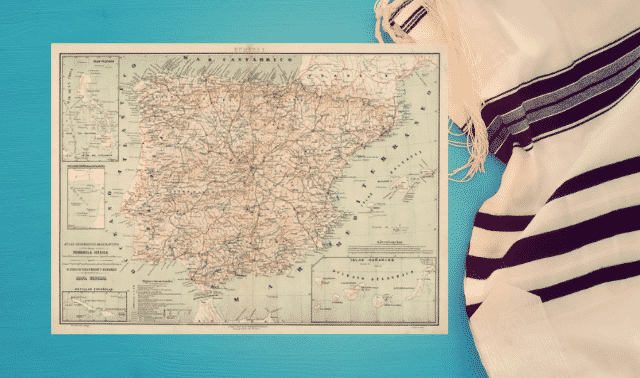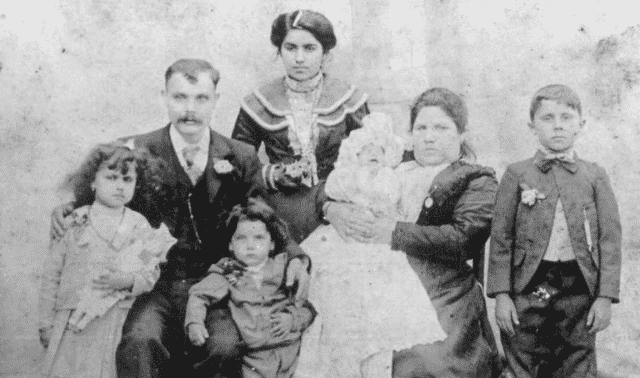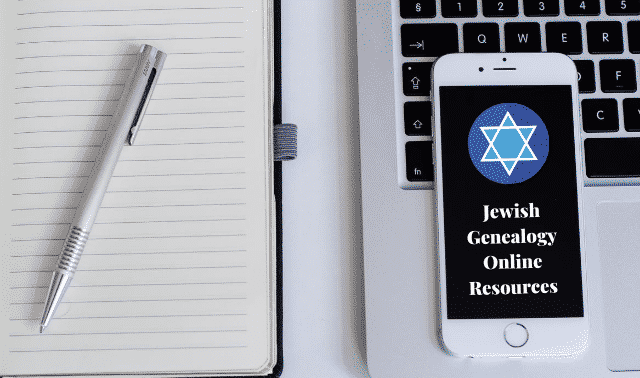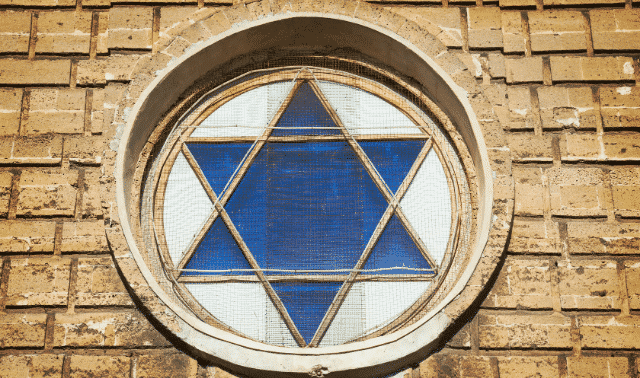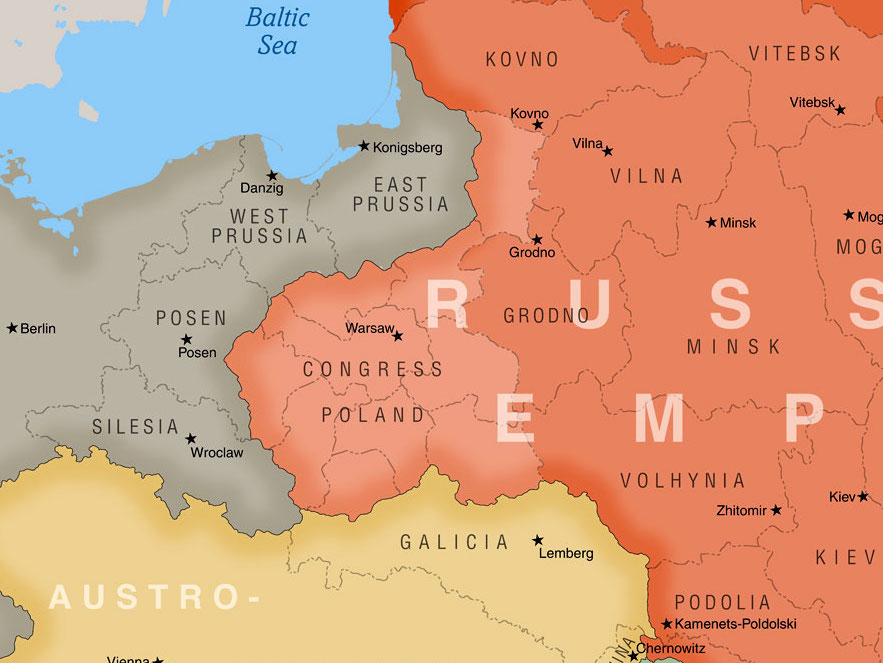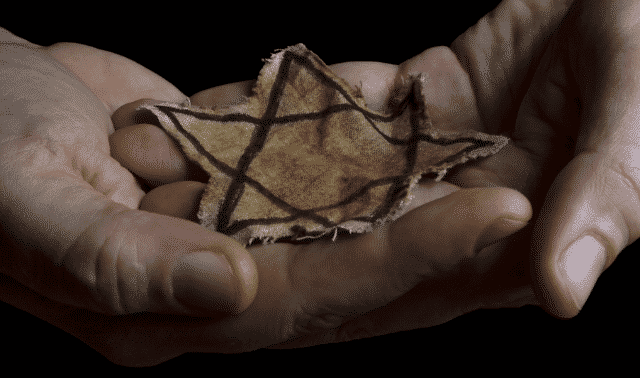Sign up for the Family Tree Newsletter! Plus, you’ll receive our 10 Essential Genealogy Research Forms PDF as a special thank you.
Get Your Free Genealogy Forms
"*" indicates required fields
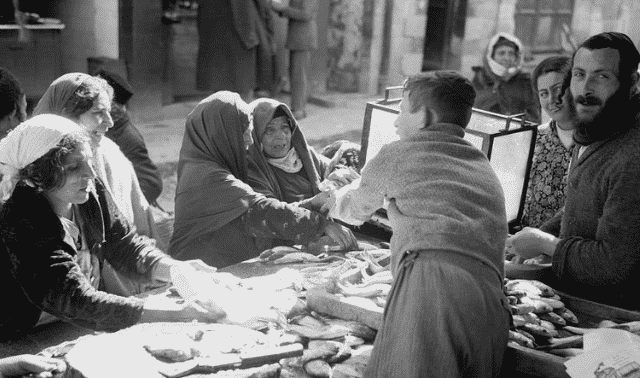
If you’ve started researching your Jewish ancestors, you might’ve heard that all the records were destroyed, or that Ellis Island clerks changed your family’s surnames, essentially cutting you off at the genealogical pass.
Don’t believe the rumors. In reality, there’s not a single documented case of an Ellis Island official changing an immigrant’s surname. (Learn the truth behind this common mistake.) Archives hold impressive collections of records. And a wealth of online resources can help you fulfill the goals you probably share with every Jewish family historian: to learn the fate of lost branches, create memorials for relatives without resting places, and connect with distant kin around the world.
That’s not to say Jewish genealogy is easy. Cultural differences, language barriers, religious persecution, forced conversion and genocide have created black holes in every Jewish family’s history. But those roadblocks needn’t stop you from discovering and honoring your past. With these seven research strategies to guide your genealogical journey, you’ll find that your family’s ties are stronger than any outside forces.
In This Article
1. Understand Jewish history
2. Trace the correct group: Ashkenazim or Sephardim
3. Break down language barriers
4. Trace the names
5. Review available records
6. Research in repositories
7. Look into DNA testing and genetics
1. Understand Jewish history
Jewish history, unfortunately, is riddled with tragic events that complicate the work of genealogists. Marauding Crusaders destroyed many European Jewish communities. Massacres, mass conversions, the Inquisition and 1492 Expulsion shattered lives in Iberia. The Russian pogroms and the tragedy of the Holocaust affected our history forever. This Day … In Jewish History documents historical events in detail.
Many actions spurred survivors to move elsewhere — sometimes to the next village, or more often, far from home. That means you’ll need to cast a wide net to find information about your family. From the Middle Ages, Sephardic communities existed in major European cities (such as Hamburg, Vienna and Warsaw), and some Ashkenazi families made their homes in the Mediterranean.
To understand and decipher Jewish records — from Hebrew tombstones to Jewish marriage contracts (ketubot) — it’s useful to learn basic tenets and traditions of Judaism, such as life events and the Jewish calendar. Knowing the Jewish day ends at sunset, for example, helps you understand death records. An online calendar conversion tool such as Steve Morse’s lets you translate Jewish dates to the civil calendar. Remember, too, that Jews use BCE (before common era) and CE (common era) instead of BC and AD when referring to civil years.
2. Trace the correct group: Ashkenazim or Sephardim
Jews fall into two major groups — Ashkenazim and Sephardim — with further subdivisions. Because of each group’s unique origins and migrations, your genealogical research will take different paths depending on which group your ancestors belonged to.
The first Jewish immigrants to the New World were Sephardim, who originated in the Iberian Peninsula. Ashkenazi Jews from Western Europe began arriving in the United States as early as the 1840s. About 95 percent of Jewish immigrants to America — predominantly Ashkenazi — came in a wave starting in 1881 following Russian pogroms, and then after each World War. Although Ashkenazim in much of Europe generally were assimilated and spoke secular languages, Yiddish was the lingua franca for those in Eastern Europe — Russia, Lithuania, Poland and Germany.
Sephardim spoke Ladino, a mix of Hebrew, Spanish and other languages sometimes called Judeo-Spanish or Judezmo. The term Sephardic generally describes any Jews not of Ashkenazi origin, including those who lived in the former Ottoman Empire, the Mediterranean, North Africa, the Middle East, the Balkans and Asia. But Jews from Iran, Iraq, Afghanistan and India are more correctly referred to as Mizrahi, Oriental or Eastern Jews. Roman Jews make up the oldest Jewish community outside Israel, and the Romaniote Jews have resided in Greece for more than two millennia.
Ladino-speaking Sephardim began to arrive in the New World in the late 1500s as conversos (the Spanish word for those forced to convert to Catholicism during the Inquisition). Columbus’ ships included converso crew. Sephardim settled in Brazil, the Caribbean and New Amsterdam.
3. Break down language barriers
Jewish records can appear in Hebrew, Yiddish, Ladino, German, Polish, Russian, French, Italian, Spanish, Catalan, Hungarian, Romanian — whatever language was spoken wherever a Jewish community existed. Vital records kept by Jewish communities are likely to be in Hebrew, Yiddish or Ladino as well as the secular language, which may have changed as borders changed. You’ll want to examine dual-language records carefully, because certain details might appear in only one language.
Sephardic records are especially challenging. Turkey is an excellent example of how convoluted the quest can be. Ashkenazi and Sephardi communities have existed side by side in what’s now Istanbul since the 1400s. Turkish was originally written with Arabic letters; since 1928, it’s employed the Latin alphabet. Sephardic records were written in Turkish, Hebrew, Ladino and solitreo, an obsolete script, while Ashkenazi and civil records are found in Turkish, Hebrew, Yiddish and Eastern European languages. (The Ashkenazi community kept its communal records in the language it knew best.)
To learn more about Jewish languages worldwide, visit Jewish Language Project for maps, text, audio samples and additional links. FamilySearch offers several helpful resources for foreign records research.
You can also get translation help from Jonathan D. Shea and William F. Hoffman’s Following the Paper Trail: A Multilingual Translation Guide (Avotaynu).
4. Trace the names
In Jewish families, given names offer clues to past generations — sometimes more so than surnames. Ashkenazim generally name children after recently deceased relatives, so you can try to estimate Ashkenazi relatives’ years of death by matching infants to ancestors. Sephardim name offspring after the living as well as the dead.
Ashkenazi given names often changed as families migrated — Hebrew or Yiddish names gave way to colloquial diminutives or secular versions. The JewishGen Given Names Data Bases helps you find alternate forms of monikers based on local and Jewish vernaculars. For example, searching for the name David turns up possible Yiddish nicknames of Debele, Dovitke, Tevele and Dovet.
The roots of European Jewish surnames are relatively recent, following civil laws passed in the late 18th century that required Jews to take fixed surnames. Many unrelated families adopted common names, so knowing the name of the ancestral village is often more helpful than searching for a surname.
Sephardic surnames, on the other hand, can be ancient — some appear in Spanish archival records as early as the 10th century. Many modern Sephardic names bear close resemblance to their original forms, indicating descent from a particular family. In Sephardic research, the surname is key to finding family in Spain or Portugal as well as Italy, Greece and Turkey.
Sephardic given names often follow established patterns. The eldest son is traditionally named for the paternal grandfather; eldest daughter for the paternal grandmother; second male child for the maternal grandfather; second female child for the maternal grandmother; next child for a paternal uncle or aunt; and the next child for a maternal uncle or aunt. But a recently deceased grandparent or sibling often takes precedence over a living relative. Some Sephardim commonly name children after their own living parents — a great honor.
Try the Sephardim.com Namelist at JewishGen. The Channeling Jewish History Blog has good information on Sephardic names.
A Soundex System for Jewish Naming Patterns
More than 20 years ago, Gary Mokotoff noticed a trend as he was poring over a database and painstakingly cataloging Jews who changed their names upon immigrating to British Palestine. “I found many spelling variants of similar names,” says Mokotoff. He also realized he could make picking a name out of a database much easier.
Since the American Soundex system — an indexing code based on similar-sounding names — wasn’t cutting it for Jewish researchers, Mokotoff created his own Soundex system to fit the Jewish naming patterns he found. He then published his concept of the new system in the premiere issue of Avotaynu in 1985. Reader and genealogist Randy Daitch picked up the journal and wrote Mokotoff with some suggestions to improve the code, now called the Daitch-Mokotoff Soundex System.
According to Mokotoff, his system and what he refers to as the “woefully inadequate” American Soundex model have three main differences. First, the Daitch-Mokotoff system carries names out to six significant consonants rather than the American system’s four. This means fewer false positives — for example, using traditional Soundex, Peters and Peterson get the same code because the first four consonants (p, t, r and s) are counted the same. But with Daitch-Mokotoff, a clear distinction occurs when you add the fifth consonant.
Also contrary to traditional Soundex, the Daitch-Mokotoff system codes a name’s initial letter. Mokotoff cites the names Auerbach and Orbach (which are actually variations of same name) as perfect examples: Using Daitch-Mokotoff, the names are grouped together — not so for regular Soundex.
Additionally, the Daitch-Mokotoff system recognizes that certain combinations of letters are actually equivalent to single-letter sounds, and should be Soundexed accordingly. The combinations tz and cz are equal to the s sound. So, the surnames Lipschitz and Lipschicz have the same code. Under the older system, those two names have different codes.
Today, most databases of Jewish names allow for Daitch-Mokotoff searching. “It’s extremely helpful for the average family historian who knows their family comes from Bialystok but doesn’t know how to spell Bialystok exactly,” says Miriam Weiner of the Routes to Roots Foundation.
You can find surnames codes by entering them in JewishGen’s Soundex Calculator. Elsewhere, read a complete guide to the Daitch-Mokotoff Soundex System.
Written by Etan Harmelech
5. Review available records
Both Ashkenazi and Sephardic Jews have lengthy paper trails to follow — once you’ve identified your family’s ancestral town. You might find this in immigration records, draft registration cards, Social Security applications or other documents. When you know the town, you can determine where its documents are located today. JewishGen’s Communities Database and Gazetteer can help you find a town with phonetic searches and maps. Records may be in surprising locations. In Morocco, for example, civil registration wasn’t required until the 20th century and, with major immigration to France and Israel, many communal records were sent to those countries.
Passenger Arrival Lists
These often give places of origin and departure ports. You’ll find them at NARA, genealogical libraries, and the Church of Jesus Christ of Latter-day Saints’ FamilySearch Library and its branch centers and affiliates. But to locate your ancestors’ list, you’ll need to know when and where they arrived in America.
Like many other ethnic groups, the majority of American Jews (2 million) immigrated to the United States between 1881 and 1924, most via the port of New York. You can search that city’s passenger lists online. Stephen P. Morse’s “one-step” Ellis Island searches include a Blue Form specifically for Jewish researchers. All three forms (Blue, White and Gray) let you search the records by town of origin, meaning you can find your relatives as well as other emigrants from the same shtetl.
When asked, many American Jews say their ancestors came simply from Russia, Hungary or Germany. But European boundaries have shifted tremendously since 1924 — when the greatest period of Jewish migration to North America came to a close. In some cases, as for Czechoslovakia (now two separate nations), the country of origin no longer exists. Use gazetteers and JewishGen’s Communities Database to help locate villages.
Written by Etan Harmelech
Naturalization Records
US naturalization records usually provide the applicants’ towns of origin, too. Because so many Jewish immigrants entered through New York, NARA could have the records you’re looking for (held at the Philadelphia facility). Alternately, you could file a Freedom of Information Act request with the US Citizenship and Immigration Services if your ancestor applied for citizenship after 1906 — but getting responses to these requests usually takes awhile. Passports also may hold clues to ancestors’ hometowns (check NARA and the FamilySearch Library).
Written by Etan Harmelech
Vital and Church Records
Some resources and documents are specific to Ashkenazim or Sephardim, but marriage, divorce, birth and circumcision records exist for both groups. They may provide three generations of names in one record through the use of patronymics (the child’s name derives from the father’s name, such as Moshe Leib ben David Leibovich, indicating the father’s and grandfather’s names). Many of these European records have been microfilmed and are available at the FamilySearch Library. Other records, such as circumcision, may have been kept privately by the mohel, the person who performs the circumcision. But some communities kept mohel registers, which indicate the date of circumcision, the parents and the mohel. The few surviving mohel books from pre-WWII Europe are scattered, but the Leo Baeck Institute has a number from Germany, and the Central Archives for the History of the Jewish People has a worldwide collection.
Jewish birth records include the baby’s name, sex, date (civil and Hebrew), names and residence of parents and grandparents, (sometimes) the mother’s maiden name, relatives’ occupations, and name of the mohel.
To find birth and death records for your Jewish ancestors, you’ll need to contact the proper archives in their town or country. You can turn to a free online resource for help. Through her nonprofit Routes to Roots Foundation, certified genealogist Miriam Weiner has collaborated with archives in Poland, Ukraine, Moldova, Belarus and Lithuania to create town-by-town inventories of Jewish and civil records that survived the Holocaust. You can search those inventories on the foundation’s website (click Archive Database). For each town, you’ll learn available document types and years, as well as which archives hold them.
Marriage Records
A Jewish marriage record will generally show the date, place, the names of the bride and groom, the dowry, parents (with patronymics giving you another generation), and sometimes occupations and previous residences. In England, many synagogues kept separate marriage registers, now transcribed and published, for both Sephardic and Ashkenazi congregations. Iberian marriage contracts will normally list several generations for both bride and groom. And don’t overlook Christian records — because of forced conversion, they might document your ancestor’s union. In many countries, the national church (usually Catholic, Orthodox or Lutheran) was responsible for keeping vital records of the entire population, including Jews. Consult the FamilySearch Library’s Jewish research outline for details.
Ketubot — beautifully illustrated and bound books of marriage contracts from the 1800s and early 1900s — provide family information.
Cemeteries and Gravestones
Finally, look to your US forebears’ final resting places and local synagogues: Jewish immigrants often formed landsmanshaftn, societies based on their towns of origin. Frequently, members bought plots in Jewish cemeteries, so if your ancestor was buried in a landsmanshaftn-owned plot, he likely came from the town that society represented. Look for landsmanshaftn records at the YIVO Institute for Jewish Records. Synagogues recorded birth, circumcision, marriage and death information. Those records, particularly marriage contracts, name the brides’ and grooms’ hometowns as well as their parents’. To find these records, write or visit the American Jewish Archives or American Jewish Historical Society.
Written by Etan Harmelech
Gravestones show the death date, the deceased’s given name, and his or her father’s name. Some Sephardic stones contain much more information. Cemetery registers, if they still exist, may also be useful.
Holocaust Records
Holocaust records are valuable for both Ashkenazi and Sephardic research. Some Sephardic communities were nearly destroyed in addition to the decimated Eastern European Ashkenazi communities. (See the next section, #6, for more information on the repositories that hold records of the Shoah.)
When communities and survivors scattered after World War II, most remaining Jews settled in what was then British Palestine, today’s nation of Israel. “[Practically] every American Jew has a relative in Israel, even if they aren’t aware of it,” says Arthur Kurzweil, author of From Generation to Generation: How to Trace Your Jewish Genealogy and Family History (Jossey-Bass)
The Israel State Archives holds naturalization records (more than 28,000 names) of Jews who immigrated to British Palestine before 1948. You can write the archives to request records or research there in person. Look for data in stateside repositories, too: The United States Holocaust Memorial Museum in Washington, DC, has Holocaust records, including a collection of concentration-camp documents captured by American troops.
Yizkor Books
Yizkor books are another incredible resource for learning about Holocaust survivors and their relatives. Dedicated to preserving the memory of individual shtetls — and created for 1,000 towns to date — they contain information survivors submitted about their pre-Holocaust homelands. You’ll find town histories, lists of resident families before World War II, captioned photos and sometimes even town maps.
Although most of the villages and towns hardly look like they used to (some were burned to the ground), yizkor books often can provide startling information. In From Generation to Generation, Arthur Kurzweil recalls how stumbling upon a memorial book in a branch of the New York Public Library (NYPL) proved to be an emotional moment. “I was absolutely stunned when I saw a picture of Avrahum Abusch, my great-grandfather, as I looked at a group photo that took up the entire page.” Even if you don’t make a discovery like Kurzweil’s, yizkor books could lead you to people who knew your deceased relatives in Europe.
The YIVO Institute for Jewish Research and the Library of Congress boast superb collections of yizkor books. You may need a translator once you find a book for your ancestors’ village or town, though, since the books are often written in Yiddish or Hebrew.
To find yizkor books at the Library of Congress, you can search its online catalog for the shtetl name. From Generation to Generation lists villages, towns and cities that have corresponding yizkor books, and JewishGen offers memorial book resources. The NYPL Digital Collections has 645 of its yizkor books online.
Written by Etan Harmelech
Records Specific to Eastern Europe
Records specific to Eastern Europe include cadastral records and maps — real estate maps showing where families lived in a town or village, sometimes for generations. Depending on the time period, Jewish records might’ve been kept by the parish church. So if you’re searching prior to civil registration, your Jewish ancestor’s vital records might be within the church records.
Census Records
Enumerations from your ancestor’s homeland can provide a wealth of information, too. Typically, censuses include names, ages, places of origin, occupations and more.
In Europe, regular censuses began in Russia in 1719 (these were poll-tax enumerations), but weren’t taken in Baltic States until about 1940. Political turmoil and social upheaval made censuses sporadic even in countries that aimed to regularly conduct them. And keep in mind that some countries, such as Germany (1939), Hungary (1724 and 1848) and Austria (1724), counted Jews independently of the common census.
To locate European census records, see Angus Baxter’s In Search of Your European Roots (Genealogical Publishing Co.), JewishGen’s Eastern Europe FAQ section, and past issues of Avotaynu, a Jewish genealogy research journal (check with a Jewish genealogical society or in the FamilySearch Library catalog).
Written by Etan Harmelech
Sephardic Records
For Sephardic researchers, records may go back to the 10th century. Note that many smaller Spanish archives are only now beginning to go digital. In Lerida a few years ago, for example, the archive had just one computer and was attempting to catalog more than 10,000 documents. Inquisition records are maintained in dedicated archives, but notarial records identify accused or sentenced individuals as Jew or converso and can provide other details.
Notarial Records
Every Spanish town’s archives holds notarial records. These extremely detailed files might include records of debts, real estate transfers, marriage settlements and divorces. Jews and conversos are noted, and variations of names can appear, as well as other towns of residence. Because of conversions, Catholic Church records are a next stop for baptism, marriage and death records.
6. Research in repositories
You’ll find Jewish records in a number of different places, from websites to centuries-old archives. The worldwide Jewish genealogy community is made up of many dedicated volunteers who are transliterating and translating records. Projects might be as narrow as births from one small town or as gigantic as the 3 million Pages of Testimony at the Yad Vashem Holocaust Memorial.
JewishGen hosts many databases, some of which are searchable for free on Ancestry.com. You may also have luck with JRI-Poland, which has some 3 million vital records. The FamilySearch Library holds microfilm of original records used by Jewish volunteers to create accessible, searchable databases, while other groups work directly with Eastern European archives to create indexes. You can search many of these on JewishGen.
Yad Vashem: The Holocaust Martyrs’ and Heroes’ Remembrance Authority holds International Tracing Service (ITS) documents, concentration-camp records, a comprehensive library, and a database of Shoah victims’ names. The United States Holocaust Memorial Museum also has ITS records.
The Center for Jewish History in New York City holds records and library resources of the American Jewish Historical Society, YIVO Institute, Leo Baeck Institute, American Sephardi Federation and the Jewish Genealogical Society of New York. Also in New York, the Museum of Jewish Heritage preserves and celebrates 20th-century Jewish life and culture.
The Central Archives for the History of the Jewish People holds the collections of hundreds of Jewish communities as well as local, national and international Jewish organizations. The Central Archives has a large collection of vital record registers from Germany from the end of the 18th century onward, as well as registers from France, Italy and Poland.
Sephardicgen has links to sources, names, news lists and country resources, plus information on Spanish notarial records, Inquisition archives and ketubot. JewishGen also has a Sephardic historical overview.
Tip: If you find research too frustrating, you could hire a reputable researcher to do the work for you. Consult organizations such as the Association of Professional Genealogists, the International Commission for the Accreditation of Professional Genealogists and the Board for Certification of Genealogists. JewishGen lists professional researchers under their countries of specialty in its Eastern Europe FAQ section.
7. Look into DNA testing and genetics
The most advanced genealogy tool — DNA testing — is raising as many questions as answers. My family is Ashkenazi with Sephardic roots; New Yorker Judy Simon had a similar story. “My grandfather always said we were marranos,” says Simon, using a derogatory term for Jews that refers to swine. “It was a story carried through the generations that our family left Spain during the Inquisition.”
In 2007 Judy and I co-founded the Iberian Ashkenaz Y-DNA project to find more people like us. Judy and I discovered Ashkenazi families from Eastern, Western and Central Europe with indicators of Sephardic heritage, such as Spanish or Portuguese surnames, an oral history of Sephardic ancestors, children named after living grandparents, or Mediterranean genetic disorders. The families couldn’t verify possible Sephardic roots through archival records, so we used DNA.
Judyn’s male cousin was tested, and his matches were Ashkenazi Jews from villages near his own, where Latvia, Belarus and Lithuania meet. Two Hispanic men in Mexico and Texas matched him, too. Of the Ashkenazim who found matches, none had any idea they had paternal Sephardic roots.
The most important element of DNA testing for investigating Jewish ancestry is the size of the comparative database (that is, how many other samples your profile will be compared to). FamilyTreeDNA has the largest Jewish comparative databases and the largest general DNA database, according to founder Bennett Greenspan, with records for Ashkenazim, Sephardim, Levites and Kohanim. JewishGen links to FamilyTreeDNA studies.
To learn more about genetic conditions that affect Jewish families, visit the Jewish Genetic Disease Consortium, the Genetic Disease Foundation and the Norton & Elaine Sarnoff Center for Jewish Genetics.
Information in this article appeared in the August 2006 (Harmelech) and September 2009 (Dardashti) issues of Family Tree Magazine. Last updated: January 2025
FamilyTreeMagazine.com is a participant in affiliate programs through Amazon and Genealogical Publishing Co. It provides a means for this site to earn advertising fees, by advertising and linking to affiliated websites.

